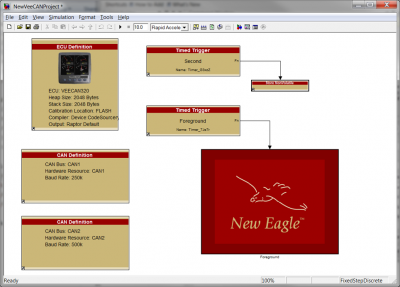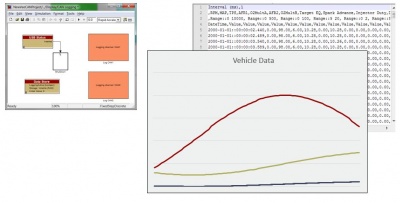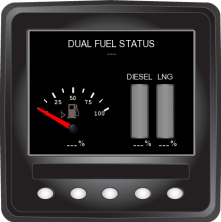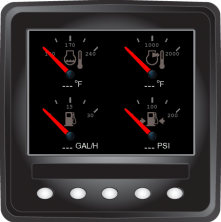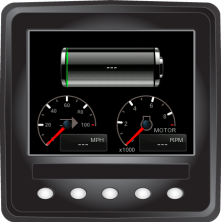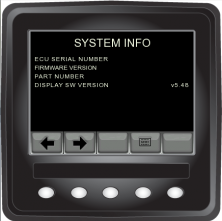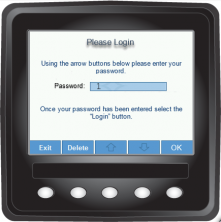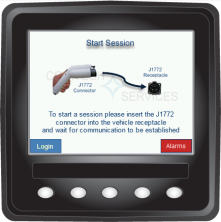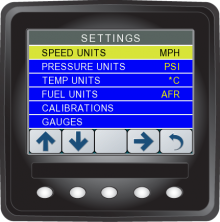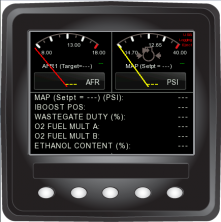Raptor-VeeCAN-320-Family: Difference between revisions
No edit summary |
|||
| Line 5: | Line 5: | ||
<!--[[File:Caption.png|200px|link=http://www.neweagle.net/support/wiki/index.php?title=Displays#Raptor_VeeCAN_320]]<br> --> | <!--[[File:Caption.png|200px|link=http://www.neweagle.net/support/wiki/index.php?title=Displays#Raptor_VeeCAN_320]]<br> --> | ||
The VeeCAN 320 Raptor display uses the Raptor development software tool to create a display interface for your application. New Eagle adapted the VeeCAN SDK to the Raptor platform. The Raptor VeeCAN platform allows model-based designers to engineer both the display logic and control logic for an HMI (Human Machine Interface). | The VeeCAN 320 Raptor display uses the Raptor development software tool to create a display interface for your application. New Eagle adapted the VeeCAN SDK to the Raptor platform. The Raptor VeeCAN platform allows model-based designers to engineer both the display logic and control logic for an HMI (Human Machine Interface). | ||
The Raptor VeeCAN has a template starter project. It provides a base project with CAN logging, control logic, and custom screens. | The Raptor VeeCAN has a template starter project. It provides a base project with CAN logging, control logic, and custom screens. | ||
[[image:Veecanraptor-example.png|400px]] | [[image:Veecanraptor-example.png|400px]] | ||
A Raptor VeeCAN user can receive messages on the CAN bus and read a VeeCAN's Analog Inputs (3 modes: 0-2.5V, 0-10V, 0-500 Ohm). The VeeCAN supports logging to an attached USB memory stick. | A Raptor VeeCAN user can receive messages on the CAN bus and read a VeeCAN's Analog Inputs (3 modes: 0-2.5V, 0-10V, 0-500 Ohm). The VeeCAN supports logging to an attached USB memory stick. | ||
[[image:Raptorveecan_logging.JPG|400px]] | [[image:Raptorveecan_logging.JPG|400px]] | ||
'''NOTE''' | |||
The file <usbstick_logoffload.autorun> must be on the USB memory stick to aid the VeeCAN in logging data. Click here to download '''[http://www.neweagle.net/support/wiki/downloads/usbstick_logoffload.autorun usbstick_logoffload.autorun]'''. | |||
===Platform Benefits=== | |||
*Model-based programming facilitates ease of use and rapid development of displays | |||
*Read and Log CAN messages | |||
*Same great benefits of the VeeCAN 320 | |||
===Downloads=== | |||
:'''[http://www.neweagle.net/support/wiki/ProductDocumentation/Raptor/Displays/DISP-VC320-1204_DataSheet.pdf VC320 Datasheet]''' | |||
:'''[http://www.neweagle.net/support/wiki/ProductDocumentation/NonRaptorDisplays/VeeCAN320_3dCAD.zip VC320 3-D CAD (.stp)]''' | |||
:'''[https://www.neweagle.net/support/wiki/ProductDocumentation/Raptor/Displays/NewEagleDisplayWhitepaper_GettingStartedwithaRaptorDisplay.pdf Programming Guide]''' | |||
:'''[http://www.neweagle.net/support/wiki/ProductDocumentation/Raptor/Raptor-Dev/Raptor-Datalogger-Development.pdf Raptor Data Logger Guide]''' | |||
==Raptor VeeCAN 320 Lite== | |||
[[File:Veecanraptor-white.jpg|right|250px]]<br> | |||
<!--[[File:Caption.png|200px|link=http://www.neweagle.net/support/wiki/index.php?title=Displays#Raptor_VeeCAN_320]]<br> --> | |||
The Raptor VeeCAN 320 Lite display uses the Raptor development software tool to create a display interface for your application. New Eagle adapted the VeeCAN SDK to the Raptor platform. The Raptor VeeCAN platform allows model-based designers to engineer both the display logic and control logic for an HMI (Human Machine Interface). | |||
The VeeCAN 320 Lite only has a single CAN channel (unlike the VeeCAN320 which has 2 CAN channels and a 13 pins of I/O) and is best suited for applications with CAN sensors. | |||
The Raptor VeeCAN has a template starter project. It provides a base project with CAN logging, control logic, and custom screens. | |||
'''NOTE''' | '''NOTE''' | ||
| Line 23: | Line 44: | ||
*Model-based programming facilitates ease of use and rapid development of displays | *Model-based programming facilitates ease of use and rapid development of displays | ||
*Read and Log CAN messages | *Read and Log CAN messages | ||
*Same great benefits of the VeeCAN 320 | *Same great benefits of the VeeCAN 320 but with fewer I/O and CAN channels, best suited for applications with CAN-based sensors | ||
===Downloads=== | ===Downloads=== | ||
:'''[http://www.neweagle.net/support/wiki/ProductDocumentation/Raptor/Displays/DISP- | :'''[http://www.neweagle.net/support/wiki/ProductDocumentation/Raptor/Displays/DISP-VC320L-1402_DataSheet.pdf VC320 Lite Datasheet]''' | ||
:'''[http://www.neweagle.net/support/wiki/ProductDocumentation/NonRaptorDisplays/VeeCAN320_3dCAD.zip 3-D CAD (.stp)]''' | :'''[http://www.neweagle.net/support/wiki/ProductDocumentation/NonRaptorDisplays/VeeCAN320_3dCAD.zip VC320 3-D CAD (.stp)]''' | ||
:'''[https://www.neweagle.net/support/wiki/ProductDocumentation/Raptor/Displays/NewEagleDisplayWhitepaper_GettingStartedwithaRaptorDisplay.pdf Programming Guide]''' | :'''[https://www.neweagle.net/support/wiki/ProductDocumentation/Raptor/Displays/NewEagleDisplayWhitepaper_GettingStartedwithaRaptorDisplay.pdf Programming Guide]''' | ||
:'''[http://www.neweagle.net/support/wiki/ProductDocumentation/Raptor/Raptor-Dev/Raptor-Datalogger-Development.pdf Raptor Data Logger Guide]''' | :'''[http://www.neweagle.net/support/wiki/ProductDocumentation/Raptor/Raptor-Dev/Raptor-Datalogger-Development.pdf Raptor Data Logger Guide]''' | ||
==VeeCAN 320 Display Examples== | |||
<gallery widths=222px heights=222px perrow=4 caption="A selection of displays created on the Raptor VeeCAN 320"> | <gallery widths=222px heights=222px perrow=4 caption="A selection of displays created on the Raptor VeeCAN 320"> | ||
| Line 43: | Line 64: | ||
Image:re10.png|Raptor's possibilities are endless, with customs displays like this one | Image:re10.png|Raptor's possibilities are endless, with customs displays like this one | ||
</gallery> | </gallery> | ||
320 | |||
Revision as of 18:10, 4 January 2021
Raptor VeeCAN 320
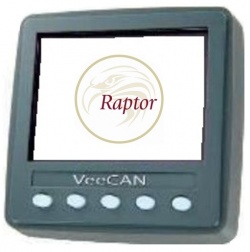
The VeeCAN 320 Raptor display uses the Raptor development software tool to create a display interface for your application. New Eagle adapted the VeeCAN SDK to the Raptor platform. The Raptor VeeCAN platform allows model-based designers to engineer both the display logic and control logic for an HMI (Human Machine Interface).
The Raptor VeeCAN has a template starter project. It provides a base project with CAN logging, control logic, and custom screens.
A Raptor VeeCAN user can receive messages on the CAN bus and read a VeeCAN's Analog Inputs (3 modes: 0-2.5V, 0-10V, 0-500 Ohm). The VeeCAN supports logging to an attached USB memory stick.
NOTE The file <usbstick_logoffload.autorun> must be on the USB memory stick to aid the VeeCAN in logging data. Click here to download usbstick_logoffload.autorun.
Platform Benefits
- Model-based programming facilitates ease of use and rapid development of displays
- Read and Log CAN messages
- Same great benefits of the VeeCAN 320
Downloads
Raptor VeeCAN 320 Lite

The Raptor VeeCAN 320 Lite display uses the Raptor development software tool to create a display interface for your application. New Eagle adapted the VeeCAN SDK to the Raptor platform. The Raptor VeeCAN platform allows model-based designers to engineer both the display logic and control logic for an HMI (Human Machine Interface). The VeeCAN 320 Lite only has a single CAN channel (unlike the VeeCAN320 which has 2 CAN channels and a 13 pins of I/O) and is best suited for applications with CAN sensors.
The Raptor VeeCAN has a template starter project. It provides a base project with CAN logging, control logic, and custom screens.
NOTE
The file <usbstick_logoffload.autorun> must be on the USB memory stick to aid the VeeCAN in logging data. Click here to download usbstick_logoffload.autorun.
Platform Benefits
- Model-based programming facilitates ease of use and rapid development of displays
- Read and Log CAN messages
- Same great benefits of the VeeCAN 320 but with fewer I/O and CAN channels, best suited for applications with CAN-based sensors
Downloads
VeeCAN 320 Display Examples
- A selection of displays created on the Raptor VeeCAN 320
-
Example of a fuel gauge, and fuel status screen
-
A collection of dials showing engine information
-
A custom Raptor screen showing a battery meter, vehicle speed and engine speed
-
A very simple Raptor System info screen and menu
-
Anything is possible in Raptor, even a log in screen such as this
-
Raptor's customization is shown heavily in this custom menu screen
-
A custom system menu screen, capable of controlling the whole display
-
Raptor's possibilities are endless, with customs displays like this one
320
